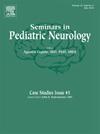Neuro-ophthalmic sequelae of pediatric brain tumors
IF 2.1
4区 医学
Q2 CLINICAL NEUROLOGY
引用次数: 0
Abstract
Brain tumors are a leading cause of mortality and morbidity in the pediatric population. Neuro-ophthalmic symptoms can be a consequence of the disease process, as well as a feature of long-term complications from treatment. Compressive lesions of the visual pathway lead to changes in visual acuity and field defects. Double vision and strabismus can be some of the earliest clues of underlying posterior fossa tumors, which frequently cause hydrocephalus and manifest as optic nerve edema on neuro-ophthalmic examination due to increased intracranial pressure. Persistent complaints of blurry vision in combination with nonspecific neurologic concerns warrant ophthalmoscopy to appreciate optic nerve appearance and magnetic resonance imaging as the earliest steps in the investigation of possible compressive or infiltrative malignancies. In many cases, treatment of pediatric brain tumors relies on maximal surgical resection and radiation, which can have permanent consequences not only affecting the patients’ visual function but also their neurologic development. This review will summarize the neuro-ophthalmic presentations and consequences of pediatric tumors affecting the brain, highlighting classic neuro-ophthalmic correlates and describing the known sequelae of tumor progression or treatment.
小儿脑肿瘤的神经眼后遗症
脑肿瘤是儿童死亡率和发病率的主要原因。神经眼症状可能是疾病过程的结果,也是治疗长期并发症的特征。视觉通路的压缩性病变导致视力的改变和视野缺损。复视和斜视可能是潜在后窝肿瘤的早期线索,常引起脑积水,并在神经眼科检查中因颅内压升高而表现为视神经水肿。持续的视力模糊和非特异性的神经系统问题,需要眼科检查来观察视神经的外观和磁共振成像,作为调查可能的压缩性或浸润性恶性肿瘤的最早步骤。在许多情况下,儿童脑肿瘤的治疗依赖于最大限度的手术切除和放疗,这不仅会影响患者的视觉功能,还会影响他们的神经发育。这篇综述将总结影响大脑的儿童肿瘤的神经眼科表现和后果,突出经典的神经眼科相关因素,并描述肿瘤进展或治疗的已知后遗症。
本文章由计算机程序翻译,如有差异,请以英文原文为准。
求助全文
约1分钟内获得全文
求助全文
来源期刊

Seminars in Pediatric Neurology
CLINICAL NEUROLOGY-PEDIATRICS
CiteScore
4.80
自引率
0.00%
发文量
38
审稿时长
84 days
期刊介绍:
Seminars in Pediatric Neurology is a topical journal that focuses on subjects of current importance in the field of pediatric neurology. The journal is devoted to making the status of such topics and the results of new investigations readily available to the practicing physician. Seminars in Pediatric Neurology is of special interest to pediatric neurologists, pediatric neuropathologists, behavioral pediatricians, and neurologists who treat all ages.
 求助内容:
求助内容: 应助结果提醒方式:
应助结果提醒方式:


